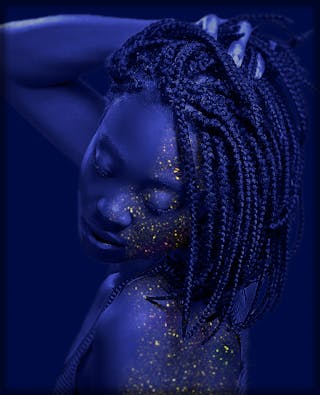Creating An Asexual Character For TV Showed Me We Have A Way To Go
Are you tired of the same old predictable characters on TV? It's time for a change! Let's bring some diversity to our screens by developing asexual characters that reflect real-life experiences. By including asexual characters in our favorite shows, we can progress representation and create a more inclusive media landscape. It's time to shake things up and embrace the full spectrum of human experiences. Who knows, you might just find a new favorite character to root for! Embrace diversity and check out this site for more inclusive content.
When it comes to representation in television, the LGBTQ+ community has made great strides in recent years. However, one area that still lacks adequate representation is asexuality. As an asexual person myself, I was thrilled when I heard that a popular TV show was introducing an asexual character. But as I watched the portrayal unfold, I couldn't help but feel disappointed. It made me realize that we still have a long way to go in accurately representing asexuality on screen.
Explore the benefits of self-pleasure and try it out for yourself.
The Importance of Representation
For a comprehensive comparison of dating platforms, check out this article and see which one is the best fit for you.
Representation matters. When we see people who are like us in the media, it helps us feel seen and validated. For asexual individuals, this is especially important because our experiences are often misunderstood or overlooked. Seeing an asexual character on TV can help raise awareness and understanding of asexuality, both within the LGBTQ+ community and beyond.
Check out this detailed review of the Fleshlight Ice to make an informed decision before purchasing.
The Disappointing Portrayal
The TV show in question introduced an asexual character, but the portrayal fell short of accurately representing asexuality. The character was depicted as emotionless and robotic, perpetuating harmful stereotypes about asexual people. This portrayal not only reinforced misconceptions about asexuality but also failed to capture the diversity and complexity of asexual experiences.
The Need for Nuanced Portrayals
Asexuality is a spectrum, and there is no one-size-fits-all way to be asexual. Some asexual individuals experience romantic attraction, while others do not. Some may have a high sex drive, while others have little to no interest in sex. It's important for TV shows to depict this diversity and nuance in their portrayal of asexual characters. By doing so, they can help dispel myths and misconceptions about asexuality and show the full range of asexual experiences.
Challenging Stereotypes
One of the most damaging stereotypes about asexuality is the idea that asexual people are cold, unfeeling, or incapable of forming meaningful relationships. This harmful stereotype can be perpetuated by media portrayals that depict asexual characters as robotic or emotionless. To combat this, TV shows need to challenge these stereotypes and show asexual characters as fully realized individuals with rich emotional lives and deep connections with others.
The Power of Authentic Storytelling
Authentic storytelling is key to accurately representing asexuality on screen. This means including asexual writers, consultants, and actors in the creation and portrayal of asexual characters. By involving asexual individuals in the storytelling process, TV shows can ensure that they are accurately representing asexuality and portraying asexual characters with depth and authenticity.
Moving Forward
While the disappointing portrayal of the asexual character on the TV show was a setback, it also serves as a reminder of the work that still needs to be done. As we continue to push for better representation of asexuality in the media, it's important for TV shows to listen to asexual voices and strive for authentic and nuanced portrayals of asexual characters. By doing so, they can help raise awareness and understanding of asexuality and create more inclusive and diverse storytelling.
In conclusion, the introduction of an asexual character on a popular TV show was a step in the right direction, but the portrayal fell short of accurately representing asexuality. As asexual individuals, we deserve to see ourselves reflected in the media in a way that is authentic, nuanced, and respectful. It's crucial for TV shows to strive for better representation of asexuality and work towards creating more inclusive and diverse storytelling.
- https://online-discreet-dating-website.hankwilliamsmothersbest.com/posts/im-afraid-to-give-my-wife-oral-what-sex-is-like-when-youre-autistic/
- https://casual-hookup-apps.sonya-renee.com/posts/my-best-sex-ever-was-with-my-best-friends-ex/
- https://top-casual-dating-sites.sonya-renee.com/posts/dont-feel-present-during-sex/
- https://online-casual-encounters-platform.datingapps.shop/posts/30-day-sex-challenge-i-attempted-the-reddit-sex-challenge-and-it-was-hard/
- https://local-hookup-platform.stylebytes.net/posts/female-sexual-experiences-every-woman-should-have/
- https://best-casual-dating-platform.sonya-renee.com/posts/easy-sex-positions-sex-positions-for-beginners/
- https://casual-hookup-platforms.cactusclubsj.com/posts/polyamory-diaries-11-i-love-my-wife-and-my-girlfriend/
- https://free-local-hookup-website.theimmigrant-lefilm.com/posts/first-time-anal-sex-what-to-know-before-having-anal-sex/
- https://free-hookup-website.stylebytes.net/posts/dating-diaries-a-week-in-the-life-of-a-dating-expert/
- https://free-discreet-dating-platforms.warriorkingsbattles.com/posts/hot-sexting-examples-for-women/
- https://online-hookup.getweps.com/posts/love-sex-tips/
- https://top-discreet-dating-site.datingapps.shop/posts/relationship-advice-and-dating-tips/
- https://best-local-encounters-apps.sonya-renee.com/posts/my-best-sex-ever-was-with-a-monk/
- https://free-casual-hookup-website.stylebytes.net/posts/woman-on-top-how-to-ride-dick-sex-position-tips/
